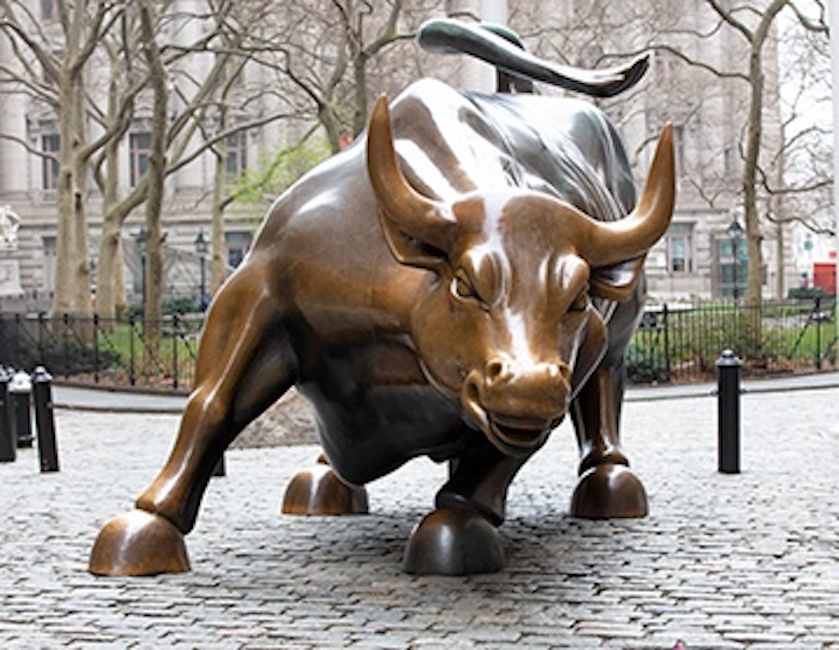Though UBI proposals come in many shapes and sizes, all share certain justifications. Prominent among them, not surprisingly, are claims that it would reduce poverty. Proponents have made an easy calculation from government statistics to show that a generous stipend of $3,000 a month for each adult in the country would cut the nation’s poverty rate in half.
A stipend of $250 a month for each child would reduce child poverty some 40 percent. UBI, proponents claim, would break the cycle of dependency among the disadvantaged, giving them time and money at last to seek the training and higher education they need to climb the economic ladder. Some of the more starry-eyed among those Silicon Valley billionaires behind the proposal add that UBI would help bring on a cultural revolution by allowing people time from toil to “contemplate the meaning of life."
 This is a photo of the Charging Bull by Arturo Di Modica with no people around it during the 2019-20 Coronavirus Pandemic (COVID-19) during a city imposed travel and work restriction. A rare sight since this is one of the most iconic and photographed tourist attractions in New York City.
This is a photo of the Charging Bull by Arturo Di Modica with no people around it during the 2019-20 Coronavirus Pandemic (COVID-19) during a city imposed travel and work restriction. A rare sight since this is one of the most iconic and photographed tourist attractions in New York City.
Matters, however, are far from as straightforward as these arguments suggest. Cost is an obvious consideration. The most quoted schemes today would, according to calculations from Commerce Department data, cost the federal government between $2- and 4 trillion a year, amounting to a 50 percent increase in current federal outlays or more than 10 percent of last year’s gross domestic product.
(more)





